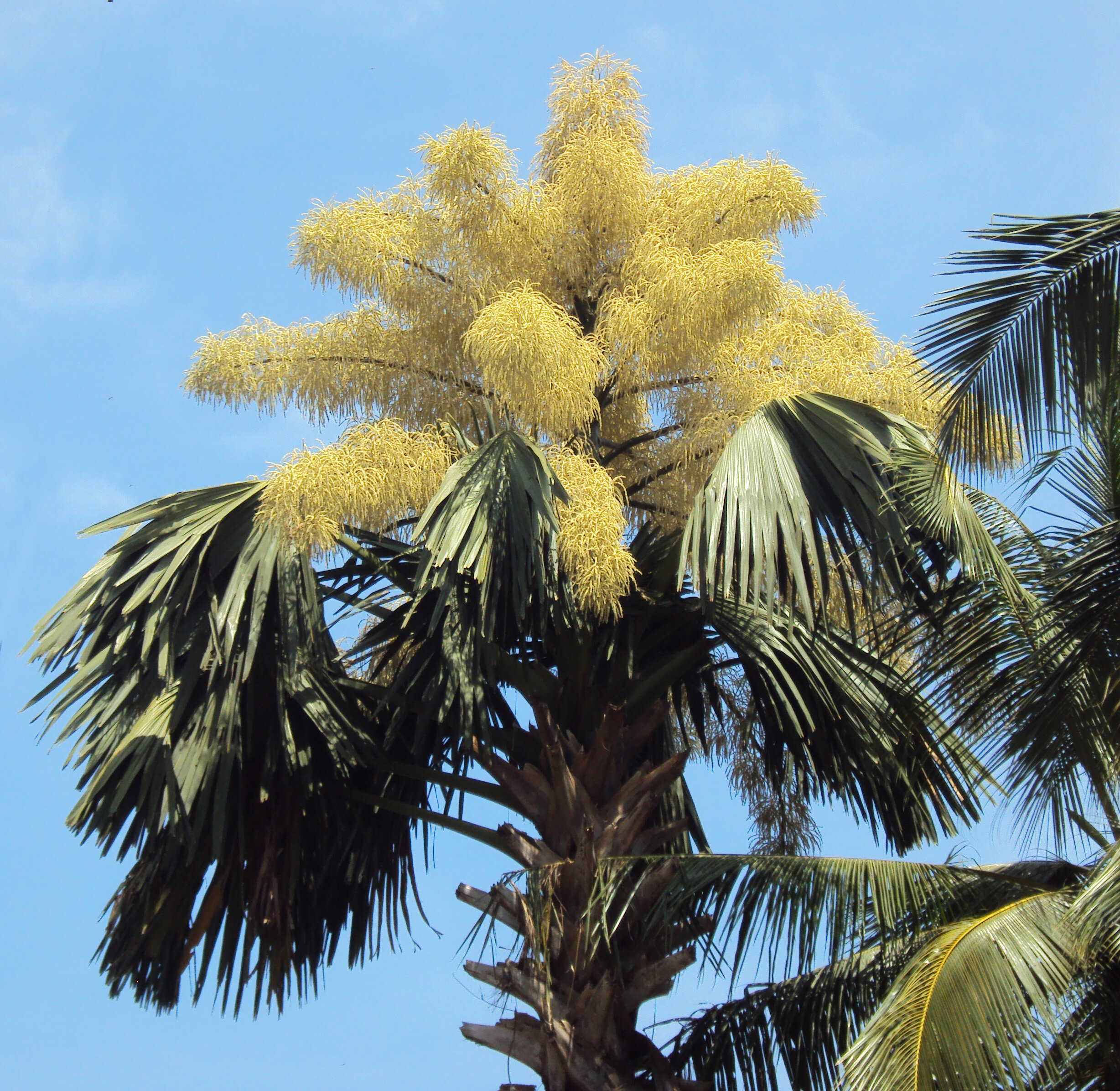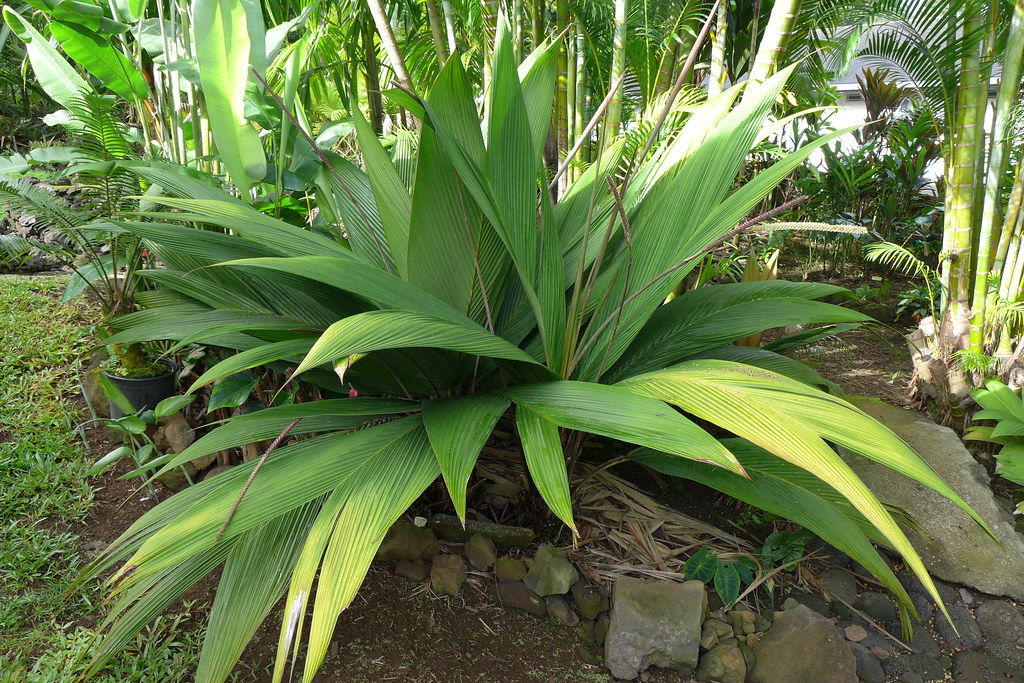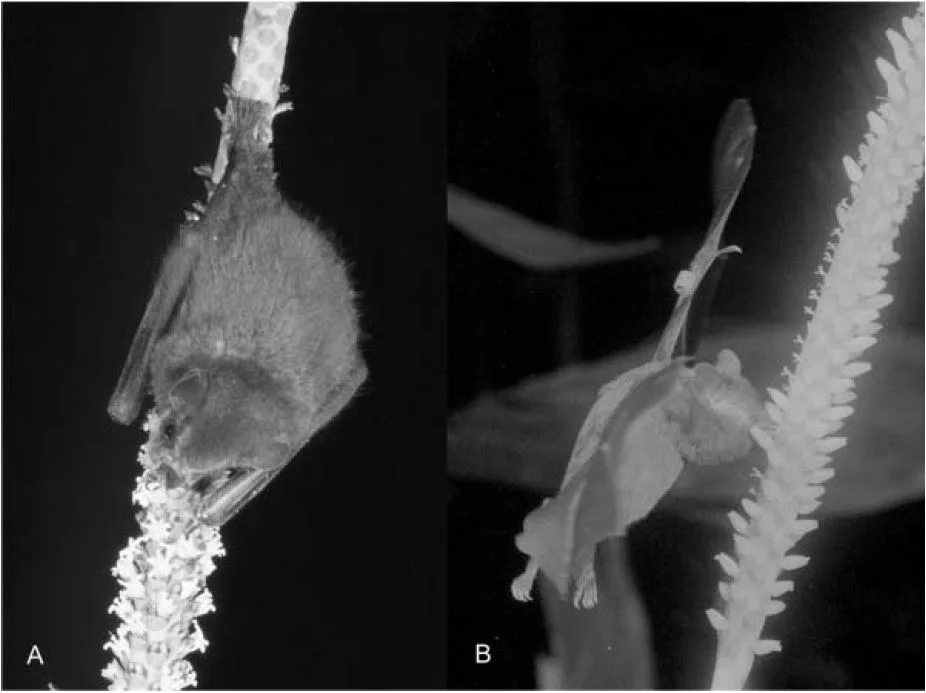Photo by Vinayaraj licensed under CC BY-ND 2.0.
I like record breaking species. It is always exciting to find out which species produces the largest or smallest of something. Lately (and rightfully so), the titan arum (Amorphophallus titanum) has been getting a lot of attention for its incredible inflorescence. Many have bloomed in botanical gardens over the last few years and each one draws a massive crowd. People flock from far and wide to see that largest unbranched inflorescence in the world. You always see it referred to that way; the largest unbranched inflorescence. That got me to thinking, who produces the largest branched inflorescence in the world?
The answer to this is the talipot palm (Corypha umbraculifera). Native to southern India and Sri Lanka, the talipot palm blows all other branched inflorescences out of the water. Heck, branched or not, looking over its dimensions makes me feel like it puts most floral structures to shame. The branched designation comes from the fact that its flowers aren’t borne on a single stalk but many branching stalks. The proportions of this structure are truly staggering.
A talipot palm topped with a massive white inflorescence. Photo by Cumulus Clouds licensed under CC BY-ND 2.0.
The talipot palm inflorescence can measure upwards of 26 feet (8 m) in length and bear as many as 23.9 million flowers at a time. It has been estimated that if you were to lay out all of the branches and flower stalks end to end, you would have nearly 26,000 feet (8,221 m) of plant material. This is truly epic as far as flowering plants are concerned. Even more amazing is the fact that this epic inflorescence is often produced 65 feet (20 m) up in the air!
As you can imagine, producing such a structure and all of the fruits that result takes an absurd amount of energy. Talipot palms grow for anywhere between 30 and 80 years before blooming. Following pollination, the fruits take another year to mature. Once this job is done, the palm dies. It throws all of its energy into one, truly massive reproductive event. Pretty incredible if you ask me.
During my search, I also came across another interesting record breaking palm, Raphia regalis. This species is native to parts of western Africa where it can be found growing in moist, lowland forests. Raphia regalis has the distinct honor of producing the largest self-supporting leaf in the world. Given what I have read, I would imagine that in a dense forest, it would be extremely difficult to take in the full grandeur of its leaves. They are huge. The current record for a single R. regalis leaf is 82 feet (25.1 m) long. It isn’t a solid leaf but rather a compound leaf made up of much tinnier leaflets. To see one in all of its glory would be a truly special event.
Photos 1911 (above) and 2015 (below) showing the incredible leaf length of Raphia regalis. Photo posted by Dr. Thomas Couvreur and lifted from the book: "from the Congo to the Niger" Vol 2 by A. Schultze










